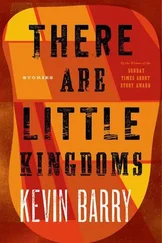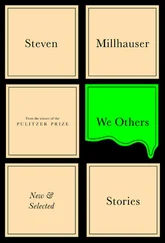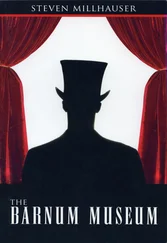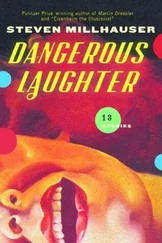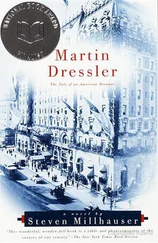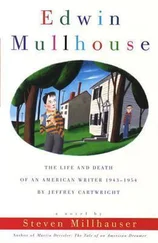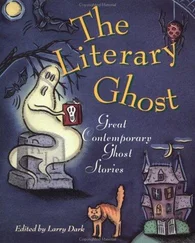Moorash possessed engravings of Hans Holbein the Younger’s series of drawings Der Totentanz (1524) and Das Todesalphabet (The Alphabet of Death , 1524), as well as engravings from La grant danse macabre des hommes et des femmes printed by Nicolas Le Rouge in 1496, but his handling of the subject is so radically his own that the search for a model is surely mistaken: he need have had no more than the broadest sense of a Dance of Death for his imagination to have taken fire. The conception is bold, stark, and disturbing: from a dark ground that at first appears empty and black emerges a line of five milky, transparent figures, who at one moment seem to melt into the darkness and at another to float into a kind of ominous half visibility. The figures, which seem to repel close inspection, appear to be dancing or reveling — they carry sticks, bells, a tambourine — and are oddly distorted, as if displayed in gestures that have been unnaturally arrested. The first figure, with its hollow eyes, snub nose, and sticklike forearm, emerges after many viewings as a dim, shifting skeleton; the four followers appear to be two men and two women (with their long, eerily floating smokelike hair). But what is most striking and uncanny about the Totentanz is the way it continually presents itself as different from the way it appeared a moment before — one is continually stepping closer, and farther back, and to the side, simply in an effort to see what is there. The background alone is a masterpiece of murk, a tone poem of dissonant darknesses. Dim forms appear to be visible, only to reveal themselves as the curves of bold brushstrokes, which again seem to tease the eye into evoking shapes that may or may not be there. From Elizabeth’s Journal we know something of Moorash’s methods: we know, for instance, that over a ground of white lead and oil he painted a more or less conventional landscape, the sole purpose of which was to be covered by a layer of black pigment applied in such a way as to permit a shadowy sense of the obscured landscape to show through at certain angles or under certain kinds of illumination. We know that Moorash experimented with scumbles and glazes. We know that for a while he became obsessed with the literal thickness of applied pigment and attempted to use that thickness to permit buried images to emerge. It is in this context that we first hear of a series of paintings, all lost, called variously the Haunted Paintings, the Ghost Paintings, and the Ghost Canvases, to which it will be useful to turn for a moment.
In addition to the six surviving paintings of 1844–46, there are an unknown number of paintings now lost — presumably destroyed by Moorash himself — about which we hear from time to time in Elizabeth’s Journal and in occasional letters of Elizabeth and William Pinney to friends. Among the lost paintings, variously estimated at between seven and fifteen, are a small number known collectively as the Haunted Paintings, on which Moorash worked from time to time, but especially in the summer and early fall of 1844. There appear to have been at least six of these paintings, several of which are described in some detail in the Journal, for they disturbed and attracted Elizabeth. From her description it appears that all of the Haunted Paintings were characterized by thickly painted dark backgrounds, pale transparent figures that seemed to sink into the thick paint, and an ambiguous manner of impressing themselves on the eye: Elizabeth was never certain exactly what she was seeing. Moorash referred dismissively to the canvases as his “ghost tricks,” but kept on painting them. The paintings troubled Elizabeth; she calls them “brilliant but sinister” and begins to feel haunted by them. On 12 August 1844 she records an interesting exchange:
ELIZABETH: I’m beginning to feel I live in a haunted house!
EDMUND (shrugging): Nothing new here. All paintings are ghosts.
After the concentrated work on the Haunted Paintings of the summer and early fall of 1844, Moorash appears to have dropped them for other projects, returning briefly to them in December; we last hear of a Haunted Painting in March 1845, shortly before his return to the Totentanz.
The Totentanz , then, may be thought of as the culmination of a particular series of experiments; its uncanny effects derive directly from the “ghost tricks” of the Haunted Paintings. The effect of the Totentanz on Elizabeth was extraordinary — she calls it “dangerous to look at” and adds: “Edmund has turned us all into ghosts.” There was no doubt in her mind that the four figures led by Death were Edmund, William, Sophia, and herself.
It will be recalled that shortly after Moorash’s offending words to Sophia on the night of 2 August 1843, a reconciliation appears to have been effected with the help of Elizabeth; in any case we find the four friends visiting back and forth across Black Lake as if nothing had changed. But everything had changed. From all indications it seems clear that Moorash was now desperately in love with Sophia, but forced to suppress his feelings in her presence. Elizabeth, always keenly sensitive to every nuance of her brother’s moods, cannot have felt at ease in her friend’s company: she was confused and even frightened by Edmund’s passion for another woman, perhaps hurt and jealous, secretly hoping they could all return to a more innocent time — yet even as she suffered his obsession she remained the devoted sister who longed for Edmund to be happy, to have what he wanted. Alongside her jealousy and fear, therefore, another strain sounds in the Journal: her resentment toward Sophia for refusing Edmund. She imagines (4 September 1843) the marriage of Edmund and Sophia: “And why should I not continue to live in the same house with them, loving her as a sister?” She will not have to give up Edmund: she will simply add Sophia to their ménage. What threatens this idyllic vision is not a possible hesitation on the part of Edmund or Sophia to include Elizabeth in their marriage: what threatens it is Sophia’s refusal to love and marry Edmund in the first place. But meanwhile new difficulties in friendship had arisen for both Sophia and William. Sophia, who did not return Edmund’s passion, was forced to suffer his mute gazes, his pain, his noble suppressions, his deliberate coolnesses; above all she was forced to feel Elizabeth’s distraction and unhappiness, for which Sophia felt obscurely responsible. Had she in some way caused Edmund to fall in love with her? (she asks in a letter to her friend Eunice Hamilton). She will not permit him to mistake her feelings a second time; yet she does not relish the role of cruel stony-hearted refuser, and she is aware that, in some way she cannot grasp, her refusal of Edmund has injured her relation to Elizabeth. As for William, his warm friendship for Edmund had already been severely tried during the time of his own unsuccessful suit of Elizabeth — in a sense, he had lost Elizabeth to Edmund — and he cannot have watched calmly his friend’s sudden obsession with Sophia. It must at times have seemed to William that Edmund was trying to draw all the women to his side and leave William with no one. In addition, William’s own decision not to marry, as well as his decision to live with his sister, was at least in part influenced by Edmund’s life with Elizabeth; and now his friend, by throwing himself at Sophia, was rejecting the very world of tidy domestic arrangements that he himself had brought into being and presented to William as a model.
The Pinneys left for Boston in mid-September and did not return to the cottage on Black Lake until the late spring of 1844, when Moorash had almost certainly begun the Totentanz. On 8 August 1844, according to Elizabeth’s Journal, the four friends were walking in a small wood when Edmund grasped William by the arm and invited him to “come along to the barn,” where he still worked during the warm summer months and where the Totentanz stood on an easel among bits of straw. When the women returned to Stone Hill Cottage they found William and Edmund in animated discussion in the kitchen-parlor. “Pinney,” cried Edmund, springing up from the sofa when Elizabeth and Sophia entered the room, “you’re the best friend a raving madman ever had!” William laughed aloud, Sophia looked away with the shadow of a frown, and Elizabeth, who knew that Sophia thought Edmund a little mad, watched the scene tensely. In her Journal she noted that “E never behaves naturally before Sophia.” But the elation was genuine: William had been “overwhelmed” by the Totentanz and had urged his friend not to abandon it. In doing so he made use of a curious argument that left a strong impression on Moorash. Whether you hate or love the painting, Pinney had argued, makes no difference: you must work on it as if the painting were a destiny, you must work on it as if you were dead.
Читать дальше



